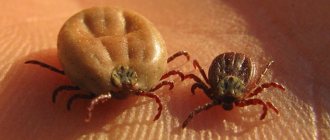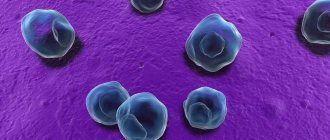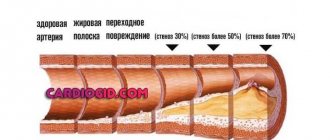Lyme disease (Lyme borreliosis, tick-borne borreliosis) is an infectious disease that is transmitted through the bites of ixodid ticks. In patients with Lyme disease, various organs and systems are affected: skin, nervous system, heart, joints. Early diagnosis and adequate antibacterial therapy in most cases ensures complete recovery. However, identifying the disease in late stages and illiterate treatment threatens that the disease will develop into an intractable chronic form.
Borreliosis: What is it?
Ixodid tick-borne borreliosis (Lyme disease) is a serious disease caused by bacteria of the genus Borrelia.
Unlike encephalitis, it is highly treatable, but the risk of contracting it is three times higher. In some regions, the incidence of ticks with Borrelia approaches 100%. The infection is widespread not only in Siberia, but also in the western part of Russia (Leningrad, Tver, Yaroslavl, Kostroma, Perm, Tyumen and other regions). In 2021, 6,481 cases of the disease were identified in Russia (4.42 cases/100 thousand population).
Taking antibiotics usually helps relieve symptoms and prevent borreliosis from progressing, but even then, fighting the disease can take anywhere from weeks to years. Late therapy can lead to damage to bones and joints. Lyme disease can also affect different organs at different stages of the disease, including the heart and brain.
Causes of borreliosis
Borreliosis is a bacterial infection that occurs in temperate regions of the Northern Hemisphere.
The causative agent and vectors of borreliosis
The causative agent of Lyme disease is a bacterium, or more precisely, a number of bacteria of the Borrelia genus: Borrelia burgdorferi (B. burgdorferi) in North America, Borrelia afzelii or Borrelia garinii in Europe and Asia.
The main carriers of borreliosis are ticks of the genus Ixodes (Fig. 1). Bacteria inhabit the organs of ticks, secreted through the salivary glands of parasites that drink blood.
Figure 1. Sizes of mites at different stages of the life cycle. Source
Typically, ticks wait for a new host in grass and low bushes, often on the border with a forest. Large concentrations of ticks can be found along paths where animals and people pass. Ticks are often found in the gaps of old stone walls - field mice often nest there (video 1).
Video 1. How ticks and mice are involved in the spread of Lyme disease.
You should be wary of ticks with the onset of spring. They wake up at the same time as the first thawed patches appear, being hungry, and they need food to begin to reproduce. By the beginning of May there are usually especially many ticks.
Ticks cannot survive in direct sunlight and prefer moist air. They don't jump, fly, or fall out of trees. Ticks sense heat and carbon dioxide emitted by animals and people. If someone walks past a tick, it will try to bite and attach itself. Sometimes you can still catch a tick on yourself before it attaches itself. Sometimes up to 24 hours pass from the moment the tick first contacts the skin until the start of blood sucking.
Important! Ticks can attach themselves to pets (including dogs and cats) and enter your home with them. Both pets and people can become infected with Borrelia from ticks.
People most often become victims of young ticks in the nymphal stage (Fig. 2). Immature ticks are very small and their bite is easy to miss. The most common sites for tick bites are the armpit, groin, back of the knees and lower back. The tick can bite children on the neck or scalp.
Figure 2. Tick bite. People are usually bitten by ticks in the nymph stage - during this period of development, the tick is no larger than a poppy seed. Source
The good news is that to transmit Lyme disease, the tick must remain firmly attached to the skin and drink blood for 36 to 48 hours. Find and remove it early, before the tick gets full and heavy, and the risk of contracting borreliosis will be reduced to almost zero.
Lyme disease in pregnant women
Current evidence suggests that there is no identifiable congenital Lyme disease syndrome.
With adequate treatment of an infection acquired during pregnancy, there is no risk of congenital anomalies or fetal death. If a woman previously had a disease that was diagnosed and treated before pregnancy, then there is also no reason to worry about the unborn child.
Pregnant women from endemic areas or who have recovered from Lyme disease are often concerned about its transmission. At the moment, there is no evidence that the disease can be transmitted: through breastfeeding, through sharing cutlery or dishes, or through intimate contact.
If you are pregnant and think you have borreliosis, contact your doctor immediately. Untreated Lyme disease during pregnancy can lead to infection of the placenta.
The causative agent is a spirochete
Already from the name itself it is clear that the carriers of this disease, as well as tick-borne encephalitis, are ticks. In the United States, Lyme disease is transmitted by Ixodes scapularis
(in 1982, the American researcher W. Burgdorfer first isolated the infectious agents themselves, Borrelia, from these ticks);
in Europe this function is performed by ticks Ixodes ricinus
, and in our country by the notorious taiga ticks
Ixodes persulcatus.
The causative agent of borreliosis is a spirochete complex under the magnificent Latin name Borrelia burgdorferi sensu lato
(sl) - is closely related to
Treponema
- the causative agent of the well-known syphilis - and
Leptospira
- the causative agent of leptospirosis, a serious disease that affects many species of animals, including humans.
All of these spirochetes have a similar appearance and resemble a convoluted spiral in shape. To date, based on genetic and phenotypic differences, 12 species of Borrelia have been identified, but until recently only three species were considered dangerous to humans: B. burgdorferi sensu stricto
(ss),
B. afzelii
and
B. garinii.
However, recently there have been reports that another species was isolated from patients with ITB -
B. spielmanii
, which indicates the possible pathogenicity of this species.
Borrelia are able not only to move under the skin, but also to penetrate blood vessels, moving with the bloodstream to the internal organs.
The blood-brain barrier, which protects the blood vessels of the brain, is not an obstacle for them. Borrelia is distributed unevenly across regions of the world. In Russia, two species are of main epidemiological importance - B. afzelii
and
B. garinii
, which are found in a vast forest zone from the Baltic to southern Sakhalin.
At the Institute of Chemical Biology and Fundamental Medicine, the study of Borrelia began in 2000. Research conducted jointly with the Institute of Systematics and Animal Ecology of the SB RAS, aimed at identifying the species diversity of Borrelia circulating in natural foci of ICD in the Novosibirsk region, allowed us to establish a number of facts. In addition to the widespread B. afzelii
and
B. garinii,
rare genetic variants of these species have been discovered.
According to light microscopy data, the infection of taiga ticks with Borrelia in the Novosibirsk region is 12-25%. Microscopic examination of fixed and vital preparations revealed Borrelia in both adult mites collected from plants and in partially or fully engorged larvae and nymphs.
Since these spirochetes have been found at all stages of tick development - from larvae to adults (adults), they can all serve as sources of infection. The pathogen transmission cycle begins with the feeding process of a non-infectious tick on an infected animal. Ticks infected with Borrelia are capable of transmitting these microorganisms to healthy animals during their next feeding, and also continue to accept an additional “portion” of spirochetes from infected mammals. In the early stages of tick development, small mammals are involved in this process; adult ticks begin to feed on large mammals, and in addition they can “attack” a person, infecting him.
Having penetrated the mammal's body along with the saliva of the tick, spirochetes begin to multiply intensively in the skin at the site of the bite. They are able not only to move under the skin, but also to penetrate blood vessels, moving with the blood flow to the internal organs. The blood-brain barrier is not an obstacle for them either: by multiplying in the cerebrospinal fluid, Borrelia become the cause of severe neuroinfections.
Stages of the disease
The development of borreliosis includes three successive stages, preceded by an asymptomatic incubation period. The division into stages is arbitrary, as it describes the clinical picture of the disease, which may differ in different patients, and sometimes be absent. In some patients, the disease manifests itself only in the first stage, in others - in the second and third.
Incubation period
Like most infections, borreliosis does not manifest itself immediately. Its incubation period usually ranges from 3 to 30 days. The first symptoms most often appear when the wound from a tick bite has long healed.
1st stage
The early localized stage of the disease is the period of time when bacteria have not yet spread throughout the body. The stage is characterized by the presence of primary effects on the skin (rash - erythema migrans), which disappear after a few days or weeks, sometimes months. Antibodies to Borrelia may not yet be detected in the patient’s blood during this period.
2nd stage
After the first stage, which is accompanied by a recognizable rash, the disease seems to go away, all symptoms disappear, sometimes for several weeks. However, if a person remains untreated at this time, the infection will reappear and an early disseminated stage will occur. This means that bacteria have already begun to spread through the blood and lymph to the organs. At the second stage, usually 4-5 weeks (sometimes later) after infection, the first signs of infection affecting the nervous and cardiovascular systems begin to appear.
3rd stage
The late disseminated stage corresponds to the period when bacteria have already spread throughout all systems and organs.
The third stage develops several months or years after infection and cannot appear earlier than the previous two stages. At the same time, its symptoms may be the first if the disease did not manifest itself before. The main symptom of the third stage of borreliosis is arthritis - joint damage.
Chronic ixodic tick-borne borreliosis
Chronic Lyme disease is referred to by some practitioners as post-Lyme disease syndrome. Although most patients with borreliosis can be cured with a 2-4 week course of antibiotics, some patients may continue to have symptoms (joint pain, fatigue, confusion) many years after the illness. This development of infection is usually associated with an autoimmune reaction of the body.
The term chronic borreliosis is also used to describe symptoms in people without clinical or diagnostic evidence of current or past infection with Lyme disease. Due to the lack of a clearly defined clinical definition of "chronic borreliosis", many experts do not support its use.
Immune response
As a rule, several pathogenic mechanisms are involved in the development of borreliosis infection. Some syndromes, such as meningitis and sciatica, probably reflect the result of direct infection of the organ, but arthritis and polyneuritis may be associated with indirect effects caused by a secondary autoimmune response.
The body's immune response to borreliosis infection manifests itself in different ways. To control the spread of infection, the body uses both innate
(nonspecific resistance), and adaptive
specific immune response,
i.e., the production of specific antibodies against the infectious agent. During the first two weeks after the onset of the disease, most patients actually exhibit immunoglobulins against certain Borrelia antigens - infectious proteins that trigger the body's immune response mechanism.
Back in the 90s. last century, the first studies aimed at developing an anti-borrelia vaccine were conducted in the United States. But even today there is no effective vaccine that protects against this dangerous disease. It is likely that the difficulties in obtaining safe vaccines are related to the characteristics of the immune response observed during borreliosis infection. It can trigger the production of antibodies against some of the body's own proteins, i.e., cause dangerous autoimmune reactions.
The reason for this immune response is molecular mimicry, a similarity (for example between the borrelia lipoprotein OspA and the adhesion protein hLFA-1α), which is produced by our T cells in the synovium lining the inner surfaces of the joints. Thus, complications arising after vaccination with a vaccine based on the OspA lipoprotein, in most cases, manifested themselves in the form of arthritis and autoimmune rheumatoid arthritis. Work to create an acceptable, harmless and at the same time effective vaccine is still ongoing.
Symptoms
The main thing with borreliosis is to understand what you are sick with and start treatment. Symptoms of the disease vary depending on the stage of the disease.
Symptoms at stage 1
The first sign of infection is a characteristic rash called “erythema migrans.” This is a radiating spot on the skin at the site of the tick bite, increasing in diameter (Fig. 3). It occurs in about 80% of those infected and is usually salmon or red in color. Sometimes the color covers the entire affected area, or may have a flesh-colored area in the center, giving it an "apple" appearance.
Figure 3. Erythema migrans in borreliosis. Source
Erythema can cause itching and “burning.” It usually expands outward within a few days, reaching 20 cm in diameter. In most people, only one lesion can be observed (at the site of the tick bite), but 10-20% of patients also have multiple erythemas. This occurs due to the pathogen entering directly into the blood from the site of the bite, and not because the person was bitten by several ticks at once.
Important! The red rash immediately after a bite is most likely caused by an allergic reaction to the tick's saliva. Do not confuse this with symptoms of Lyme disease. Typically, this rash lasts from 24 to 48 hours, it does not expand and becomes noticeably paler over time. The characteristic borreliosis erythema appears later, several days or even weeks after infection, and becomes increasingly red over time. In any case, if in doubt, consult your doctor. He will be able to determine the exact cause of the redness: an allergy requires other treatment.
The rash is often accompanied by:
- fatigue,
- fever,
- headache,
- stiffness in the neck muscles,
- pain in joints and muscles.
Symptoms at stage 2
As the disease progresses, symptoms change. A sign of the early disseminated stage is secondary ring erythema. They occur when the pathogen has already entered the bloodstream and spread throughout the body. At this stage of the disease, nonspecific, virus-like signs and symptoms may also occur:
- weakness, malaise,
- fever and heat,
- headache and muscle pain,
- joint pain,
- enlarged lymph nodes.
Less common is inflammation of the heart muscle and lining of the heart.
Treatment at this stage is still effective and can relieve severe health problems. But without the presence of erythema migrans, other visible manifestations are often insufficient for an effective diagnosis. Severe symptoms are unusual for borreliosis, and if skin lesions are absent, the diagnosis may be misdiagnosed.
Symptoms at stage 3
The main signs that Lyme disease has entered its final phase:
- Muscle and joint pain, arthritis (Fig. 4). Occurs in 80% of people with the disease who have not received antibiotic treatment. Joint pain occurs in 20% of people, joint inflammation in 50%, and persistent inflammation of one or more joints in 10% of untreated people.
- Skin symptoms include swelling, skin nodules and subsequent thinning of areas of the skin - on the arms, legs, knees or elbows.
- Neurological symptoms (quite rare) - pain, memory and thinking disorders, decreased sensitivity in the limbs and tissues.
Figure 4. Signs and symptoms of Lyme disease at different stages. A - erythema migrans at an early stage of the disease. B - facial paralysis and joint inflammation in the late stage of the disease. Source
Without treatment, the infection can progress over several months, and the effects of the disease are sometimes observed for several years.
Diagnosis of Lyme disease
Diagnosis of borreliosis is important for prescribing effective treatment. Therefore, if symptoms appear after a tick bite, you should definitely visit an infectious disease doctor.
To assess a patient's condition and diagnose the disease, health care providers should consider:
- Signs and symptoms of Lyme disease,
- The likelihood that a patient has been exposed to infected ticks is
- The possibility that other diseases may cause similar symptoms is
- Laboratory results, if available.
The classic erythema migrans rash usually suggests infection if:
- Recent tick bite;
- Staying in an endemic area;
- Systemic signs typical of the disease.
In Russia, according to the clinical recommendations of the National Scientific Society of Infectious Diseases, the diagnosis is considered valid if:
- There is epidemiological data - the fact of being in an endemic focus in the spring-summer period,
- There was evidence of tick suction and crawling, there is data on the duration of the incubation period,
- Migratory erythema is observed around the site of tick attachment,
- Features and dynamics of development characteristic of Lyme disease are observed.
Analyzes
Laboratory diagnostics (referred to by an infectious disease specialist) usually includes:
- detection of pathogenic bacteria in ticks,
- determination of IgM and IgG antibodies to infection in the patient’s blood using enzyme immunoassay.
The presence of infection in the tick that bit you significantly increases the risk of infection, but the main method of testing undoubtedly remains the identification of specific antibodies in the blood, serum, cerebrospinal fluid or intra-articular fluid.
So far, existing methods for diagnosing borreliosis cannot be called absolutely reliable. Antibodies can take several weeks to develop, so patients who have recently been infected may have a false negative test result. At the same time, other diseases, including some tick-borne, viral, bacterial or autoimmune diseases, can lead to false positive diagnostic results.
Important! This test cannot be used to determine whether a person is cured or not. Antibodies usually remain in the blood for several months or even years after the infection has cleared.
Characteristics of the concept
Tick-borne borreliosis is an infection caused by the spirochete Borrelia. The disease is named after these microorganisms. The carriers of spirochetes are ixodid ticks. The incubation period for tick-borne borreliosis is 7-14 days after tick ingestion. In adults and children, the pathology is accompanied by dangerous signs that can lead to disability.
Interesting fact! The infection was first diagnosed in Lyme, Connecticut in 1975. Later, the pathology was given the name “Lyme disease.”
The pathology was registered after examining adolescents who were diagnosed with arthritis. As a result of taking biological material from the joint tissue, spirochetes were discovered that provoke the disease.
Cases of borreliosis are detected only in countries where deciduous forests grow: America, Russia, the Baltic states. Spirochetes are carried by domestic and wild animals, including birds, dogs, and rodents. The tick becomes infected from infected animals by biting them. The insect then transmits the infection to humans by injecting saliva containing Borrelia into the bloodstream. You can also become infected by drinking the milk of pets. Some people become infected when tick feces land on an open wound.
There are 2 forms of borreliosis: asymptomatic and manifest. In the first form, there are no manifestations of the disease; the diagnosis is made only after decoding laboratory tests. The manifest form is characterized by rapid progression of the clinical picture.
Treatment
Antibiotics are used to treat Lyme disease. In general, the earlier treatment is started, the faster and more complete the recovery will be.
In the early stages of borreliosis, oral antibiotics are usually prescribed. These include:
- doxycycline - for adults and children over 8 years old,
- amoxicillin or cefuroxime for adults, young children, and pregnant or breastfeeding women.
The recommended duration of a course of antibiotics is 14-21 days. If you are prescribed antibiotics, it is important that you complete the entire course, even if you feel better. This will ensure that all bacteria are killed.
Sometimes doctors may prescribe intravenous antibiotics if the disease is already affecting the central nervous system. This is usually ceftriaxone or penicillin, and the course of treatment takes 14-28 days. This should be enough to clear up the infection, although you may need a little more time to recover from your symptoms.
Be aware that intravenous antibiotics may cause side effects, including mild to severe diarrhea, and may also promote infections unrelated to Lyme disease.
In the later stages of the disease, antibiotics also help kill bacteria and reduce the severity of arthritis in most people.
Nonsteroidal anti-inflammatory drugs are usually used to relieve symptoms. People with intolerance to amoxicillin, doxycycline or cefuroxime axetil are prescribed macrolides: azithromycin, clarithromycin or erythromycin. They are less effective and people treated with macrolides should be closely monitored by doctors to ensure that symptoms subside. For cardiac symptoms, a person may need additional measures, such as a pacemaker.
After treatment
After treatment, a small number of people may still have some symptoms, such as muscle pain and fatigue. In some people, arthritis may remain even after the infection has been treated. The cause of post-Lyme syndrome is unknown, and treatment with large amounts of antibiotics does not help.
Treatment of pregnant women
Pregnant women need to be treated for borreliosis! If you are pregnant and think you may be sick, talk to your doctor to help you decide on treatment. In most cases during pregnancy, a course of antibiotic treatment lasting 2-4 weeks is prescribed. With appropriate treatment, there is no risk of adverse birth outcomes. Some medications against tick-borne borreliosis are safe for pregnant women, while others may have contraindications.
Diet
There is no special diet, as such, for Lyme disease. Rational nutrition appropriate for age and gender is indicated. However, when the disease passes into stage 2-3 and there is pronounced predominant damage to certain organs and systems, an appropriate diet should be prescribed. So, for example, for neuroborreliosis - a diet for the nervous system; for arthritis - diet for arthritis; dysbiosis develops during antibiotic therapy - diet for intestinal dysbiosis, etc.
Treatment prognosis
If you have been bitten by a tick and have symptoms of tick-borne borreliosis, you should consult a doctor. If infection occurs, early treatment is most effective. Not every tick bite results in Lyme disease, but the longer the tick remains attached to the skin, the higher the likelihood of contracting Lyme disease.
See your doctor even if the signs and symptoms of the infection have disappeared—the absence of symptoms does not mean you are completely cured. Without treatment, the disease can spread to other parts of your body for months or years after infection. This can subsequently cause arthritis and problems with the nervous system.
If diagnosed in the early stages, the disease can be treated with antibiotics. The therapy remains effective even when severe symptoms such as joint inflammation and paralysis occur.
In rare cases, a person may still have symptoms that interfere with daily life after a course of antibiotic treatment. Their cause is currently unknown. If new symptoms appear after stopping the medication, this does not mean the infection is active. But in any case, it is better to consult a doctor.
Re-infection
Since many people live in areas where borreliosis is endemic, re-infection after antibiotic treatment is not uncommon. The risk of reinfection likely depends on a person's individual characteristics and medical history.
Reinfection usually occurs in those who have had erythema migrans. Reinfection is usually diagnosed when new skin lesions appear over the next year.
Patients with neurological or cardiac damage due to borreliosis can also be reinfected, but they appear to be less likely to do so than people with erythema. The reason for this pattern is likely to be a more developed immune response in patients with early disseminated or early localized disease.
The diagnosis of reinfection is usually based on clinical findings (eg, a characteristic rash in a patient living in an endemic area). A blood test usually does not help determine reinfection - after the first case of Lyme disease, antibodies from previous treatment may remain in the blood for several years.
Classification
The classification of the disease is based on clinical symptoms. There are an early period (stages I-II) and a late period (stage III):
- The first is the stage of local infection (erythema/non-erythema form).
- The second is the stage of dissemination with various variants of the clinical course - febrile, meningeal, cardiac, neuritic, mixed).
- The third is the chronic stage.
By severity: light, heavy, moderate.
By form: manifest, latent.
Preventing Lyme disease
Take precautions to avoid tick bites. Be especially careful during warmer months. If possible, avoid walking or hiking in wooded areas or areas with tall grass. Remember, you cannot develop immunity against Lyme disease—you can get it more than once.
Observe the following precautions:
- For a walk, wear light-colored clothes - if a tick lands on you, you can quickly notice it and remove it;
- Take tweezers with you, they can be useful to quickly remove the tick;
- Wear long sleeves, long pants, and tuck your pants into your socks;
- Spray exposed skin and clothing with insect repellent;
- When you return home, remove your clothes and carefully examine all areas of your skin, including your scalp;
- Take a shower. Young ticks are very small and difficult to see, but can be washed off.
Important! If you have a dog, remember that they are very susceptible to tick bites and tick-borne diseases.
Pet protection
Take care of your pet's safety. There are no vaccines suitable for dogs for most tick-borne diseases, so there is little that can protect your home and pet from infection. The result of the disease in a dog can be lameness, damage to the nervous (encephalitis, meningitis) and cardiovascular systems (for example, inflammation of the heart), kidney damage and death.
Tick bites on dogs are difficult to detect. Signs of tick-borne illness may not appear for 7-21 days or longer after the bite. Carefully monitor changes in your four-legged friend's behavior and appetite if you suspect that your dog has been bitten by a tick.
Consult your veterinarian about:
- What products are best suited for the prevention of tick-borne infestations in dogs?
- What tick-borne diseases are found in your region?
How else to reduce the chances that your dog will be bitten by a tick and get sick:
- Check your pets for ticks daily, especially after walking outdoors;
- If you have an area where your dog can roam, reduce the number of areas suitable for ticks to live in;
- If you find a tick on your pet, remove it immediately.
Important! If you have a cat, the prevention described above will work for her as well. Remember, cats are extremely sensitive to various chemicals. Do not use any tick preventative on them without consulting your veterinarian!
What to do after a tick bite
If a tick does stick to you, to remove it, follow the following algorithm:
- Grab the tick as close to the skin as possible by the head with tweezers, as in the picture below. Don't try to do this with your fingers. Slowly pull the tick upward. If necessary, use a napkin or paper towel (Fig. 5).
Figure 5. How to properly capture and remove a tick. Source
- Do not twist the tick or make sudden movements - otherwise the tick will come off and its mouthparts will remain inside. If you do tear it off, remove it like a splinter (according to some sources, the tick’s mouth does not need to be removed; over time, it will come out on its own).
- Thoroughly clean the bite area with an alcohol-based antiseptic or wash with soap and water. Wash your hands.
- Save the tick and place it in a jar or container just in case. It may be useful for analysis in case of suspected infection.
- Watch closely for signs of Lyme disease over the next week or two.
- If you are afraid to remove a tick yourself, seek medical help.
After removing a tick filled with blood (i.e., if it is suspected that the tick has been on the body for many hours), 4.4 mg/kg, but not more than 200 mg, of doxycycline can be taken once as a preventive measure for borreliosis. Before doing this, you should familiarize yourself with the contraindications to the drug.











